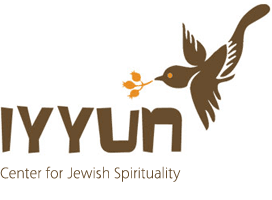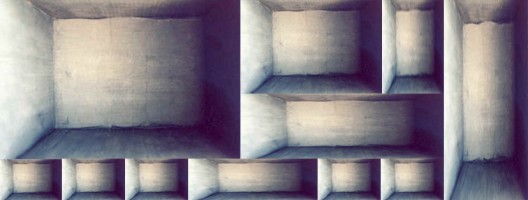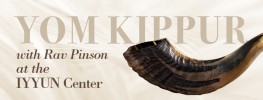Sukkot:
Inner Space
Everybody wants a home, if not a home, at least an apartment or personal room to call their own. Deeply we all quest a secure a place where we can just be ourselves; somewhere we can let down our garbs and guards.
To the people around us we are always something different — for some we are a mother or father, to others a brother or sister, and yet others a child, sibling or grandparent. Beyond the position in a family unit, we also carry around titles; the things we do become the title we have, whether doctors, lawyers, accountants or business people.
Yet, deep within us, no matter how old we grow or how successful we are or may appear on the outside, there is the little vulnerable you, the modest you who seeks reassurance in being your simple self – just you. Not what you do and not the image you project – just you.
The High holidays, beginning with Rash Hashanah and culminating with Yom Kippur, is a time that is dedicated to profound soul-searching, a process in which we lay open our deepest self. Hopefully nothing remained unexplored and no area of self unexcavated. Yet, having exposed the real self, we now desperately need a secure place, a safe environment where we can relax and be totally comfortable with who we are. Once we have regained our confidence in the newly rediscovered self we can then venture out into the public arena of life and openly bare our souls. Sukkas is just this right antidote.
Entering the Sukkah, even for just a few moments, allows us to be fully surrounded and enwrapped within the walls of a sacred mitzvah. Rather than locks or safety systems to deem us protected, when we settle ourselves within a Sukkah we feel protected, safe and secure in her holy embrace. Within a Sukkah we can truly be ourselves and be comfortable. Gradually, sitting in the Sukkah empowers us to leave the sheltered space and leave in a way that we are true to who we are, proud of who we are, and proud for what we stand.
Coming Home:
Tears of Transformation
Over the years, a custom has developed that on Rosh Hashanah, during the course of the day, we go out to a living body of water with lively fish swimming therein and symbolically cast away our unwanted negative baggage. We take hold of our negativities, the devastating weight that presses us downward, and throw them into the waters. The act causes us to reflect inwardly, as we aspire to unburden ourselves of the negative elements within us and toss them into the waters to be covered over and washed away.
Rash Hashanah is a time of renewal, and in the new reality we are creating for ourselves, we wish to put aside the old self, perhaps forget about it and even throw it away. We reason that a radical shift in beingness is required. Most often, for something to change from what it is to what it desires to become there needs to be a moment when it ceases being what it is. A seed rots in the earth before it can offer new life; first comes sterility, then fertility. So we look at ourselves and look at the old image of the negative self and we let it go, let it slide into the waters.
A mere few days later, the festival of Sukkas comes around. In Temple times during the holiday of Sukkas, a festive celebration with ecstatic dancing and lively music took place as folks went to fetch water from the well to lubricate the Altar the following day. Though in the Torah there is a clear source, the sages intoned the verse that explicitly states, “You shall draw water with joy from the wells of salvation.”
This celebration was called “simchas beis hashueva- the joy of the drawing of the waters.” The joy was so immense and overwhelming that the sages of that time declared; “He who did not see the joy of simchas beis hashueva did not see joy in his life.” It was impossible for someone who has never experienced this celebration to truly appreciate what joy is all about. But why the joy? After all, it seems like a pretty simple, almost mundane act of drawing water.
The Rambam, Maimonides, seems to suggest that since with regard to the entire holiday of Sukkas the Torah says, “And you should be happy before Hashem your God for seven days” (Vayikra 23:40), and the soubriquet of Sukkas is “zeman simchaseinu – a time of our joy,” therefore, as a result of the overarching theme of joy during Sukkas, the joyfulness overflowed and inspired dancing and music during the fetching of the water.
Yet most commentators assume that there is an intrinsic relationship between gathering the waters and the ecstatic elation that was experienced and expressed.
While joy and happiness is our natural state, our ontological conditioning, often we lose touch with ourselves and we find ourselves down, dispirited and sad. To reclaim our birthright and to reattain our joy we need a stimulant. Often what evokes our joy is precisely the regaining of something that was lost. We all know the joy we sense when we are reunited with an old friend, when a person we love returns from a long trip, when spouses resolve a conflict, or for that matter when you lose your keys and then, after frantically searching, you find them. The joy comes from righting what is wrong, the sense of repairing the broken and making complete and whole that which has been shattered and fragmented. This is all part of the cosmic melding, the ‘two’ back into the ‘one.’
If in the initial stages of growth a radical brake is required, eventually a more drastic ingathering must take place. While during Rash Hashanah we cast aside the hindering elements of self in the waters, and that was beneficial and productive at that fragile stage, now we need a full embracing canopy, a Sukkah which will include all aspects of self. Now that a healthier self has emerged, there needs to be a reintegration of all aspects of who we are on this higher and deeper level. The joy is the reunification with our very own selves.
Integration
But how do we reintegrate and collect the old and broken parts of self? And what affords us the ability to do so?
A tear is a cleansing agent. The waters of our tears rinse out, purify and ultimately allows for full transformation to transpire. In between the two extremes of throwing into the water and gathering from the water are “the ten days of teshuvah.” In these honest days of introspection and deeply opening up, who is not moved to tears?
If you are aware and conscious of the times, and you open up and expose all of yourself to yourself and let it all come out, you will eventually find yourself crying. If not, says Ari R. Yitzchak Luria, “your soul is not complete.” Something is seriously amiss and drastically misaligned. Paradoxically, this awareness itself of your lack of inspiration will catapult you and may even shake you out of your complacency and spiritual insensitivity. Either way, by the time we have reached the climax at the end of Yom Kippur, our tears have utterly inspired a total reorientation so that we can recollect and re-gather our lost parts and establish them within the new elevated context of our life.
Two Types of Tears
Broadly speaking, there are two types of tears. There are the bitter tears of sadness, of loss and of yearning, but there are also the tears of joy and of reunification. Abraham cries when Sarah dies, but Jacob also cries when he first encounters his future wife Rachel.
During the days of teshuvah, culminating with Yom Kippur, the tears that flow are most often bitter tears of yearning, desiring to reunite, return and come closer. Once Sukkas comes about, the tears that may flow are tears of joy, of oneness and a healthy sense of reunification and belonging. Sitting in the Sukkah, we are present within the makifim of binah — the surrounding energies of divine comprehension. The walls are the makifim – surroundings, and sitting down, settling down, translates the bringing down of the transcendent within the immediate.
As we are sitting within the makifim of binah we are resting within the warming and gentle embrace of eima ila’ah – ‘supernal mother.’ Being engulfed within this sacred and protected space, we may feel overwhelmed to the point of tears, but here the tears are tears of joy, of a child returning and running back into the arms of his mother. After the arduous journey through Rash Hashanah and Yom Kippur we are finally home. We have arrived, and arrived with the totality of who we are.








